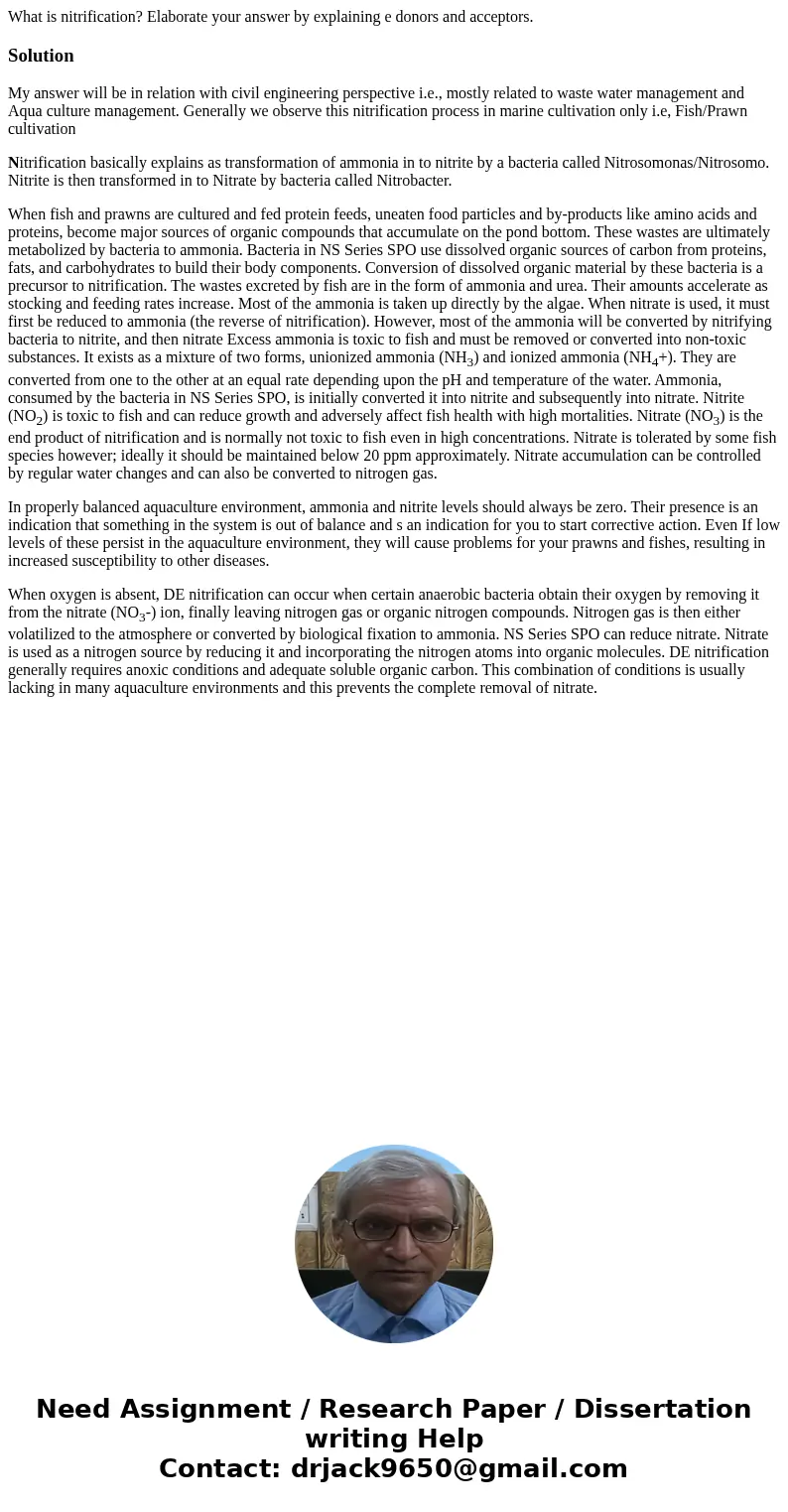What is nitrification Elaborate your answer by explaining e
What is nitrification? Elaborate your answer by explaining e donors and acceptors.
Solution
My answer will be in relation with civil engineering perspective i.e., mostly related to waste water management and Aqua culture management. Generally we observe this nitrification process in marine cultivation only i.e, Fish/Prawn cultivation
Nitrification basically explains as transformation of ammonia in to nitrite by a bacteria called Nitrosomonas/Nitrosomo. Nitrite is then transformed in to Nitrate by bacteria called Nitrobacter.
When fish and prawns are cultured and fed protein feeds, uneaten food particles and by-products like amino acids and proteins, become major sources of organic compounds that accumulate on the pond bottom. These wastes are ultimately metabolized by bacteria to ammonia. Bacteria in NS Series SPO use dissolved organic sources of carbon from proteins, fats, and carbohydrates to build their body components. Conversion of dissolved organic material by these bacteria is a precursor to nitrification. The wastes excreted by fish are in the form of ammonia and urea. Their amounts accelerate as stocking and feeding rates increase. Most of the ammonia is taken up directly by the algae. When nitrate is used, it must first be reduced to ammonia (the reverse of nitrification). However, most of the ammonia will be converted by nitrifying bacteria to nitrite, and then nitrate Excess ammonia is toxic to fish and must be removed or converted into non-toxic substances. It exists as a mixture of two forms, unionized ammonia (NH3) and ionized ammonia (NH4+). They are converted from one to the other at an equal rate depending upon the pH and temperature of the water. Ammonia, consumed by the bacteria in NS Series SPO, is initially converted it into nitrite and subsequently into nitrate. Nitrite (NO2) is toxic to fish and can reduce growth and adversely affect fish health with high mortalities. Nitrate (NO3) is the end product of nitrification and is normally not toxic to fish even in high concentrations. Nitrate is tolerated by some fish species however; ideally it should be maintained below 20 ppm approximately. Nitrate accumulation can be controlled by regular water changes and can also be converted to nitrogen gas.
In properly balanced aquaculture environment, ammonia and nitrite levels should always be zero. Their presence is an indication that something in the system is out of balance and s an indication for you to start corrective action. Even If low levels of these persist in the aquaculture environment, they will cause problems for your prawns and fishes, resulting in increased susceptibility to other diseases.
When oxygen is absent, DE nitrification can occur when certain anaerobic bacteria obtain their oxygen by removing it from the nitrate (NO3-) ion, finally leaving nitrogen gas or organic nitrogen compounds. Nitrogen gas is then either volatilized to the atmosphere or converted by biological fixation to ammonia. NS Series SPO can reduce nitrate. Nitrate is used as a nitrogen source by reducing it and incorporating the nitrogen atoms into organic molecules. DE nitrification generally requires anoxic conditions and adequate soluble organic carbon. This combination of conditions is usually lacking in many aquaculture environments and this prevents the complete removal of nitrate.

 Homework Sourse
Homework Sourse